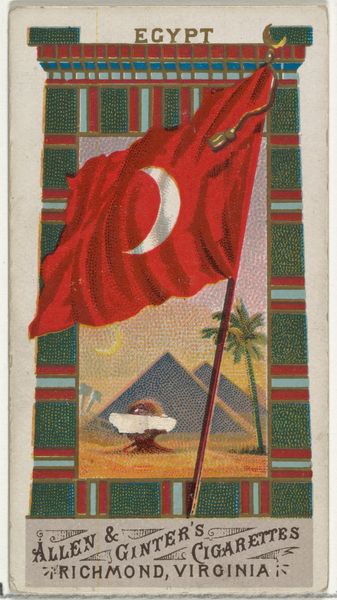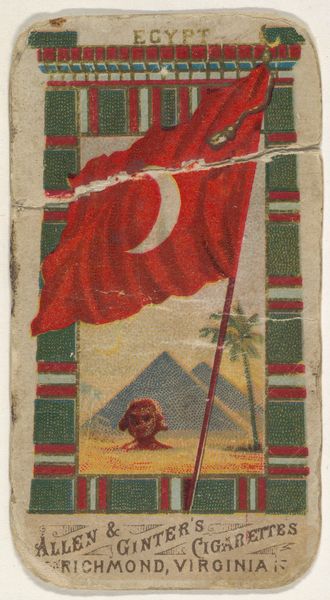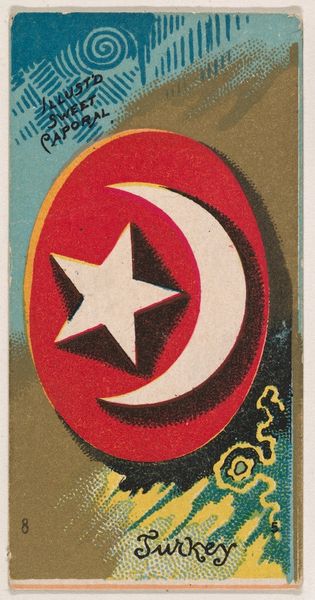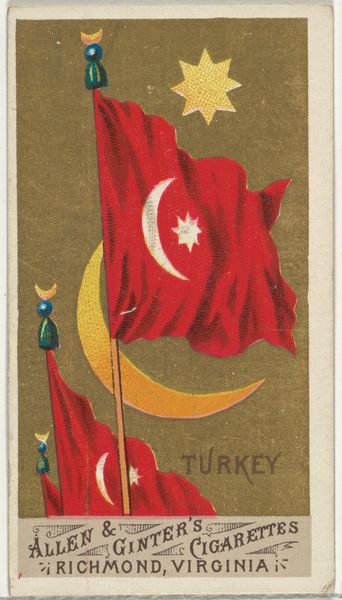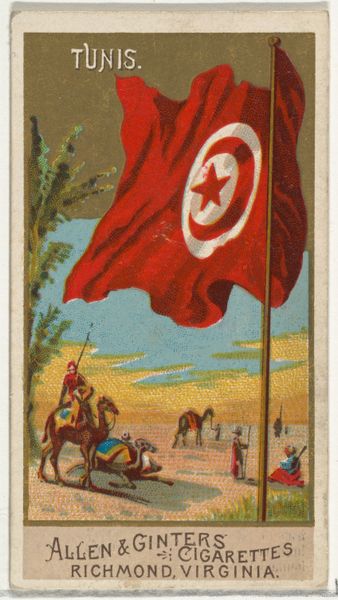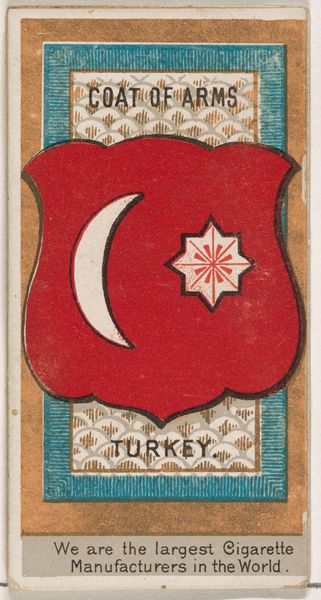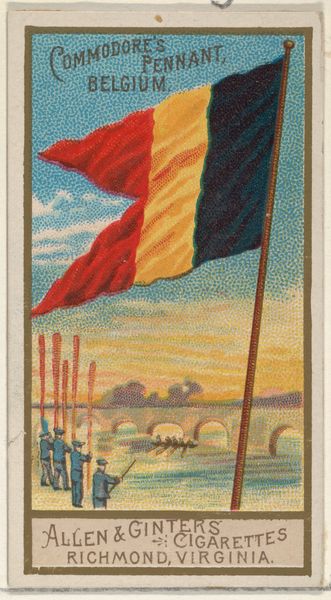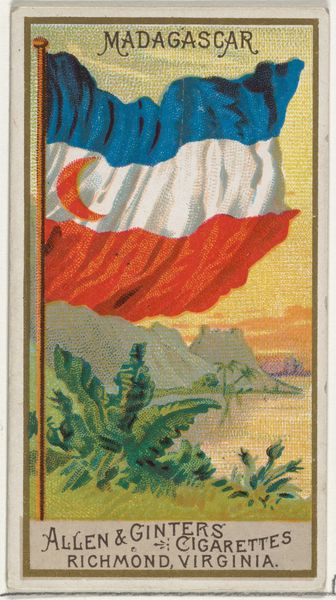
Tripoli, from Flags of All Nations, Series 2 (N10) for Allen & Ginter Cigarettes Brands 1890
0:00
0:00
Dimensions: Sheet: 2 3/4 x 1 1/2 in. (7 x 3.8 cm)
Copyright: Public Domain
Curator: This is a trading card titled "Tripoli, from Flags of All Nations, Series 2," created around 1890 by Allen & Ginter, well-known cigarette manufacturers. Editor: My first impression is of the vivid colors, that saturated red against the sandy sky. It has such a striking, almost exotic, feel to it. Curator: The card’s design exemplifies the orientalist aesthetic popular at the time, fitting into a broader pattern of Western fascination with and, frankly, misrepresentation of non-Western cultures. Consider its role within the socio-political landscape: cigarettes were marketed as symbols of sophistication and global awareness. Editor: Absolutely. These images sold a dream, a narrative of far-off lands, adventure, and, undeniably, power. The image isn’t just an innocent depiction, is it? The composition stages a kind of dominance, that huge, bright red flag planted high, lording over that almost placid beach. The tempera and print mediums further contribute to a particular way the colors are consumed – how do you read the tension, curator? Curator: Indeed. The method employed by Allen & Ginter – tempera print on card stock – served the purposes of mass production and distribution, reinforcing prevailing cultural biases on a grand scale. It's critical to understand the cigarette companies in that epoch had considerable marketing, financial, and thereby socio-political power. This miniature artwork normalized cultural domination and, essentially, romanticized colonialism. Editor: Yes. It all comes back to interrogating the context. Understanding how these romanticized, yet reductive, portrayals played into a colonial narrative of the time. The soft depiction almost shields it; the medium gives a guise of innocence, a children's-card quality to serious power dynamics. It really demands that we be critical in understanding both historical and contemporary impact. Curator: I agree. When we understand the commercial, cultural and socio-political landscape it was a product of, then we can interpret beyond just the bright colours or romanticist design elements of Tripoli from "Flags of All Nations." It really begs us to consider our place in art interpretation. Editor: Definitely a provocative glimpse into how imagery operates in our everyday lives and within power structures.
Comments
No comments
Be the first to comment and join the conversation on the ultimate creative platform.
